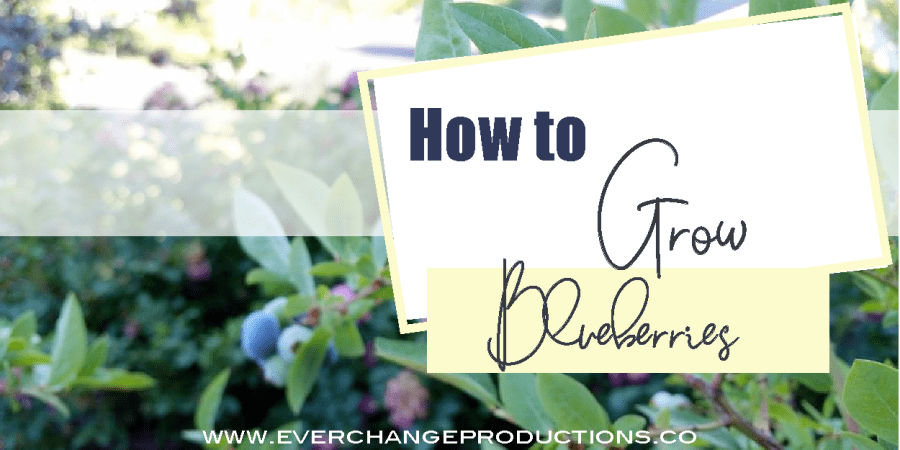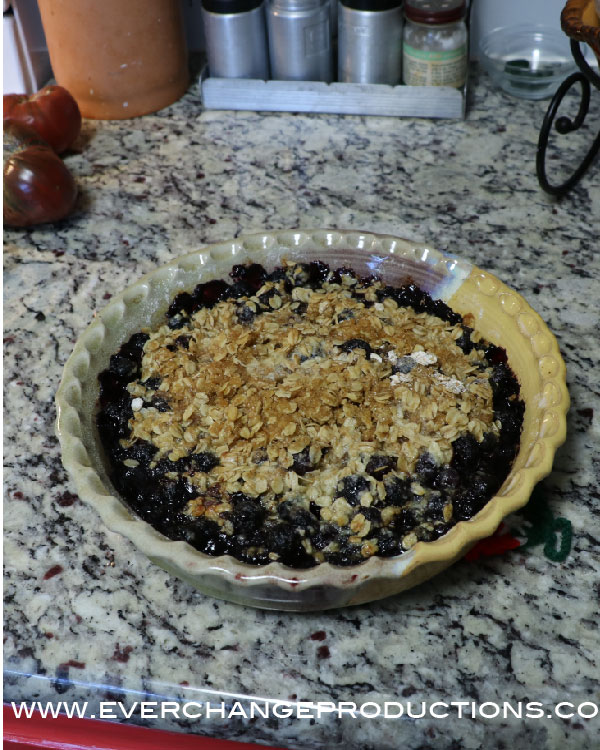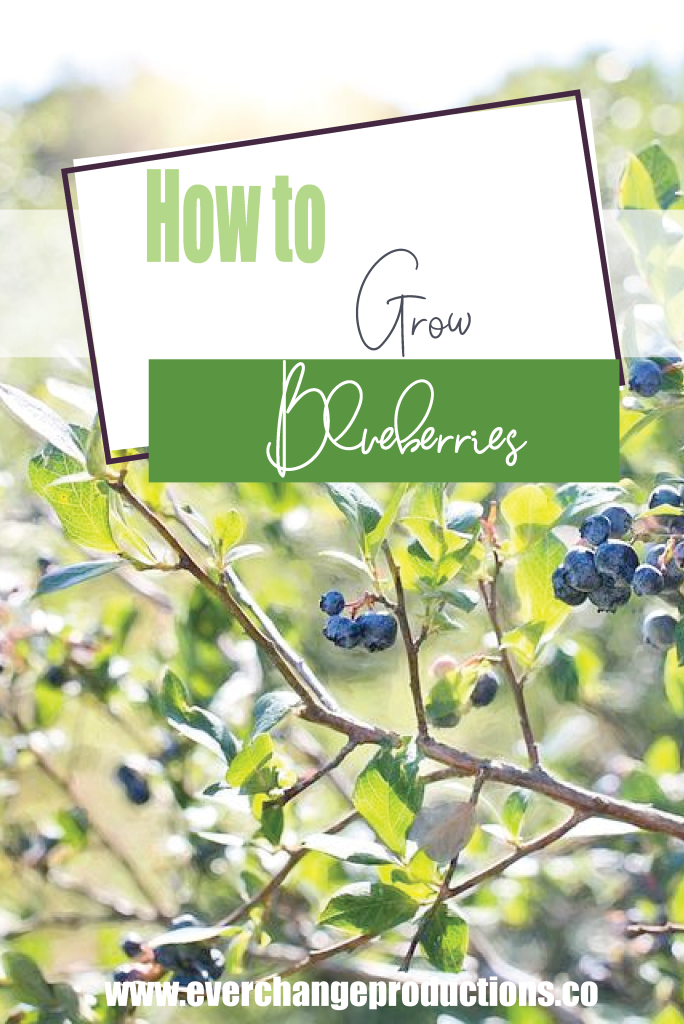How to Grow Blueberries
Learning how to grow blueberries seemed daunting at first because of overwhelming amounts of various information, fertilizers and growing advice. I’ve learned that growing blueberries is a relatively low-maintenance task in terms of their fertilization needs. Most growers typically follow a regimen of only fertilizing blueberry bushes from sungrove.com/collections/fruits/ a couple of times each year.
The OSU Extension has a great fact sheet about Blueberries, including the varieties that do well in Oklahoma and the conditions they need to thrive.
The Benefits of Growing Blueberries
Fresh blueberries are among the easiest fruits for home gardeners to grow. They have few pests, don’t take up much room, and produce berries for many years. Blueberry plants are extremely cold hardy, and their care routine is not complicated.
Nothing beats fresh produce grown in the garden. The same is true homegrown blueberries. They make a tasty addition to pies, muffins, and other baked goods, and they’re delicious right off the bush.
How Do Blueberries Grow
Blueberry plants produce new roots throughout the year. Root growth usually begins when soil temperatures reach about 55 °F, and continues through early November. In general, blueberry roots do not extend very far from the plant. In most soils, 50 percent to 60 percent of the roots are located in the top foot of soil and are within 8 to 12 inches from the crown. This why it’s important to make sure blueberry bushes are fertilized properly.
There are generally three types of growth in blueberry bushes:
- Suckers that develop from buds on roots.
- Whips that develop from latent buds (buds that have been dormant for at least one year) on older wood at the base of the crown or higher up on the bush from older wood.
- Lateral shoots. These develop from vegetative buds on 1-year-old wood (last year’s growth).
If you’re interested in the nitty, gritty science of blueberry bushes and how they grow, check out Oregon’s fact sheet on Blueberry production.
Blueberries grow best in full sun. Plants will tolerate partial shade, but too much shade causes plants to produce fewer blossoms and less fruit. Avoid areas surrounded by trees. Trees provide too much shade, compete with plants for water and nutrients, and interfere with air movement around plants.
Additionally, it’s important to know most blueberry varieties are not self-fertile, meaning their flowers cannot pollinate themselves. They need the pollen from a different variety to make quality fruits. Grow at least two different varieties for maximum fruit set.
How Big do Blueberry Bushes Get
Blueberries are grouped by plant size. Highbush blueberries (Vaccinium corymbosum ‘Jubilee’, for example) are 6 to 12 feet tall at maturity. The second category, half-high blueberries (such as Vaccinium ‘Chippewa’) usually grow 2 to 4 feet tall. The smallest category is the low-bush blueberries (e.g., Vaccinium angustifolium ‘Burgundy’) which are just 1 foot tall and generally have smaller berries than the other two varieties.
How to Grow Blueberries in Pots
Highbush blueberries would prefer to be planted in well-prepared soil in the ground but with proper planting and care, they can be grown in containers. Small varieties such as half- high blueberries or low-bush varieties would be better for container gardening.
Select a well-draining, large weather-proof container like a wooden barrel planter. Mature blueberries need a container at least 24 inches deep and about 24-30 inches wide. When planting smaller shrubs, start with a smaller container and repot as it grows. Repot in late summer – early fall so roots have enough time to grow before winter.
For container blueberries, plant bare-root blueberry plants in spring or early summer. Prior to planting, soak the roots of bare-root plants in water for about an hour.
Use a 50-50 mix of potting soil and peat moss as your planting media. Wet it thoroughly before placing it in the container. If the shrub is pot bound gently tease the roots to encourage root expansion into the potting media. Place the blueberry into the potting media and plant it the same depth as it was in its container. Then water well.
Be sure to water them deeply once a week during the first growing season.
How to Propagate Blueberries
Blueberries usually are propagated from softwood or hardwood cuttings by cutting selected twigs from healthy, disease-free mother plants. Cuttings are placed in propagation beds in a medium that holds moisture well but also allows adequate aeration.
Softwood Cuttings
Softwood cuttings are 4 inches to 5 inches long, taken from the current season’s growth in late spring. Cuttings are collected after stems have developed woody tissue but are still somewhat flexible and terminal leaves are half-grown to almost mature. Rooting usually is more successful when cuttings are taken from the first flush of spring growth.
Use sharp, clean pruning shears or knives disinfected in a solution of 1 part household bleach to 5 parts water. Remove lower leaves leaving two or three terminal leaves. Don’t allow cuttings to dry; keep them moist and cool after collection. Place cuttings in the propagation bed, under mist, as soon as possible at a depth of one-half to two-thirds of their length.
Hardwood Cuttings
Hardwood cuttings are taken during the dormant season, usually late January through February. Collect strong, healthy shoots or “whips” (usually 12 inches to 36 inches long) that grew the previous summer. Divide these “whips” into sections 5 inches to 6 inches long with a sharp knife or a bench saw with a fine blade.
Insert cuttings into the propagation medium from one-half to two-thirds of their length with one shoot bud exposed. Keep the propagation beds moist, but be careful not to use too much water.
After cuttings are rooted, apply a dilute complete liquid fertilizer weekly. Plants can remain in the propagation bed until winter, when they should be transplanted into pots or nursery beds for one year.
How to Grow Blueberries from Seed
Growing blueberries from seeds can take a bit of work, tons of patience and research.
Blueberry Seedlings Timeline
Best Fertilizer Blueberries
Upfront I knew blueberries do require a different type of fertilizer than most other plants. Blueberries need a certain acidity level and the best fertilizer can help maintain it. Other factors I was considering included nutrients and the fertilizer’s form.
Types of Fertilizers
Another way to narrow down the choices is by considering the preferred form of fertilizer. Fertilizers for blueberries are sold in either a liquid or powder formula.
- Liquid fertilizers are diluted with water and work immediately to deliver essential nutrients.
- Powder and granular fertilizers are sprinkled onto the soil and then mixed or raked in. Granular fertilizers release nutrients over time, so they are ideal for blueberry plants, which don’t have to be fertilized frequently.
Organic Fertilizer for Blueberries
Although there are synthetic fertilizers available, I knew I would be taking the organic fertilizer route. That immediately narrowed down my choices. I wanted an organic fertilizer made entirely with natural ingredients. These organic fertilizers often contain blood meal, fish meal, seaweed, or sphagnum peat moss. I could also make my own organic fertilizers like coffee grounds and eggshells to help regulate acidity levels.
Choosing the Right Fertilizer for Blueberries
There are two main factors in choosing the right fertilizer for blueberries.
Acidity of Soil
Blueberry bushes love acidic soil. They are similar to rhododendrons, azaleas, hydrangeas, and strawberries, so one of the essential requirements for growing blueberries is acidic soil. They grow best in soil with a pH level between 4.5 and 4.8. This can be challenging for most growers in the United States because our soil is not naturally acidic.
Since the soil acidity is so vital to successfully grow blueberries, you’ll need to test your soil before planting blueberry bushes.
You can use a home pH test kit or send it out to a professional test site such as Logan Labs to get a whole picture for your soil’s health.
Fertilizers also can impact a soil’s pH level. Choose a fertilizer that’s designed for acid-loving plants that will work to lower pH levels, which will often contain some version of sulfur.
Nutrients and NPK Ratio
The three macronutrients in plant fertilizers are nitrogen (N), phosphorus (P), and potassium (K). The NPK ratio listed on the bags, indicates the percentage of each of these main nutrients in the fertilizer. A balanced fertilizer has an NPK ratio of 10-10-10 or similar. Blueberries prefer a fertilizer high in nitrogen, which will strengthen the plant’s root system.
It’s also important to know phosphorous is less available to plants in soils with an acidic pH, yet blueberries require a lot of phosphorous for good fruit set. To overcome this, blueberries have formed a mutually beneficial relationship with a particular mycorrhizal fungus in the soil that helps supply nutrients to the plants. Synthetic chemical fertilizers can harm these beneficial fungi, which is another reason to avoid them.
Since fertilizers formulated specifically for blueberries are hard to come by, shoppers can look at products designed for azaleas or rhododendrons, which have similar nutritional needs.
My Favorite Blueberry Fertilizer
I went with Espoma’s Fruit & Berry Food, which is made of organic ingredients such as feather meal, poultry manure, bone meal, alfalfa meal, sulfate of potash, sulfate of magnesia, and elemental sulfur. It also contains key micronutrients such as sulfur and magnesium. The NPK ratio is 4-3-4, and the formula also contains 3 percent calcium, 1 percent magnesium, and 5 percent sulfur to satisfy the plants’ nutritional needs.
Another feature is nitrogen in the formula is further broken down into water-soluble and water-insoluble ingredients so that the plants receive an instant dose of nutrients while the slow-release formula works over time.
For 2- and 3-year-old blueberry plants, apply ¼ – ½ cup per plant per year. For mature, full-size blueberry bushes, apply 2 to 3 cups per bush per year to supply adequate nutrients.
Blueberry Fertilizers to Avoid
Be wary, however, of fertilizers containing nitrates like calcium nitrate or chloride, because they can negatively impact—or even kill—a blueberry bush.
Blueberry Recipes
I love to make my own fruit jams, and homemade blueberry jam is no exception. You can also check out the Cooking Channel for their favorite blueberry jam recipes.
Blueberry Breakfast Casserole
I’ve recently found a simple breakfast casserole that is both yummy and filling called Dark Chocolate Berry Baked Oatmeal. It’s sweetened naturally with banana and maple syrup and truly tastes like dessert for breakfast! I can cook it on the weekend and have leftovers all through the week. They use blackberries and raspberries, but blueberries are a must when they’re in season.
Mini Tart Recipe with Blueberry Filling
Mini tarts are little pies without a top crust. They are a great way to serve individual desserts or make something REALLY special for mom on mother’s day or for any special occasion.
Lemon Tart with Blueberries
This simple lemon curd tart with blueberries on top is sweet, and tangy with a buttery crust. It’s a great spring or summer dessert that’s special enough for Father’s day, Mother’s day, Easter, Memorial day or whatever day you feel like feeling extra fancy.
Healthy Toddler Friendly Blueberry Muffins
These healthy toddler blueberry muffins are made with healthier ingredients and lightly sweetened to help develop your little foodie’s taste buds. Not just for toddlers, everyone’s going to love them. But they are great for picky toddlers!
Healthy Blueberry Peach Smoothie Recipe
Smoothies are a great place to hide add fruits and veggies to kids diet. This peach blueberry smoothie is yummy and fun for kids to make.
Blueberry Lemon Blondies
Blueberry Blondies filled with tangy lemon flavor will be a winner with any fan of lemon desserts. The ultimate healthy lemon and blueberry blondies are the combination that everyone is going to be obsessed with. And they’re not just amazing, they are a healthy lemon dessert too!
Blueberry Cobbler Recipe Easy
This Blueberry Crumble recipe is super quick easy, making it perfect for any summer gathering or potluck.
Related Life Skills for Good Living
Are you interested in other content related to fresh blueberries? Check out What to Do with Fresh Blueberries, How to Freeze Fresh Blueberries and Seasonal Eating Guide with Blueberry Crumble recipe.



[…] and blueberries are two more plants that look awesome among your flower beds. I love growing them for the beauty […]